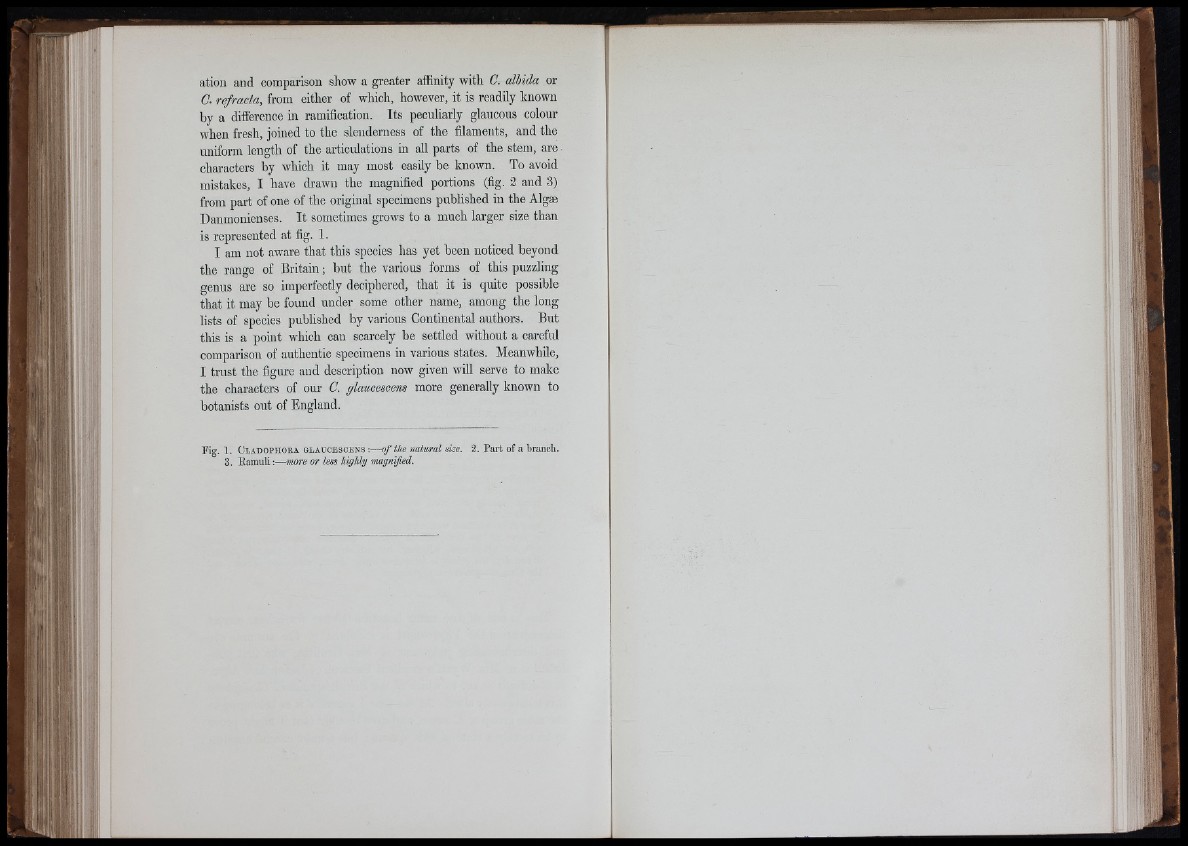
ation and comparison show a greater affinity with C. alhida or
C. réfracta, from either of which, however, it is readily known
by a difference in ramification. Its peculiarly glaucous colour
when fresh, joined to the slenderness of the filaments, and the
uniform length of the articulations in all parts of the stem, are
characters by which it may most easily be known. To avoid
mistakes, I have drawn the magnified portions (fig. 2 and 3)
from part of one of the original specimens published in the Algæ
Danmonienses. It sometimes grows to a much larger size than
is represented at fig. 1 .
I am not aware that this species has yet been noticed beyond
the range of Britain ; but the various forms of this puzzling
genus are so imperfectly deciphered, that it is quite possible
that it may be found under some other name, among the long
lists of species published by various Continental authors. But
this is a point which can scarcely be settled without a careful
comparison of authentic specimens in various states. Meanwhile,
I trust the figure and description now given will serve to make
the characters of our C. glaucescens more generally known to
botanists out of England.
i!:!
1
Fig. 1. C l a d o p h o r a g l a u c e s c e n s :— of the natural size. 2. Part of a branch.
3. Hamuli:— more or less highly magnified.
1